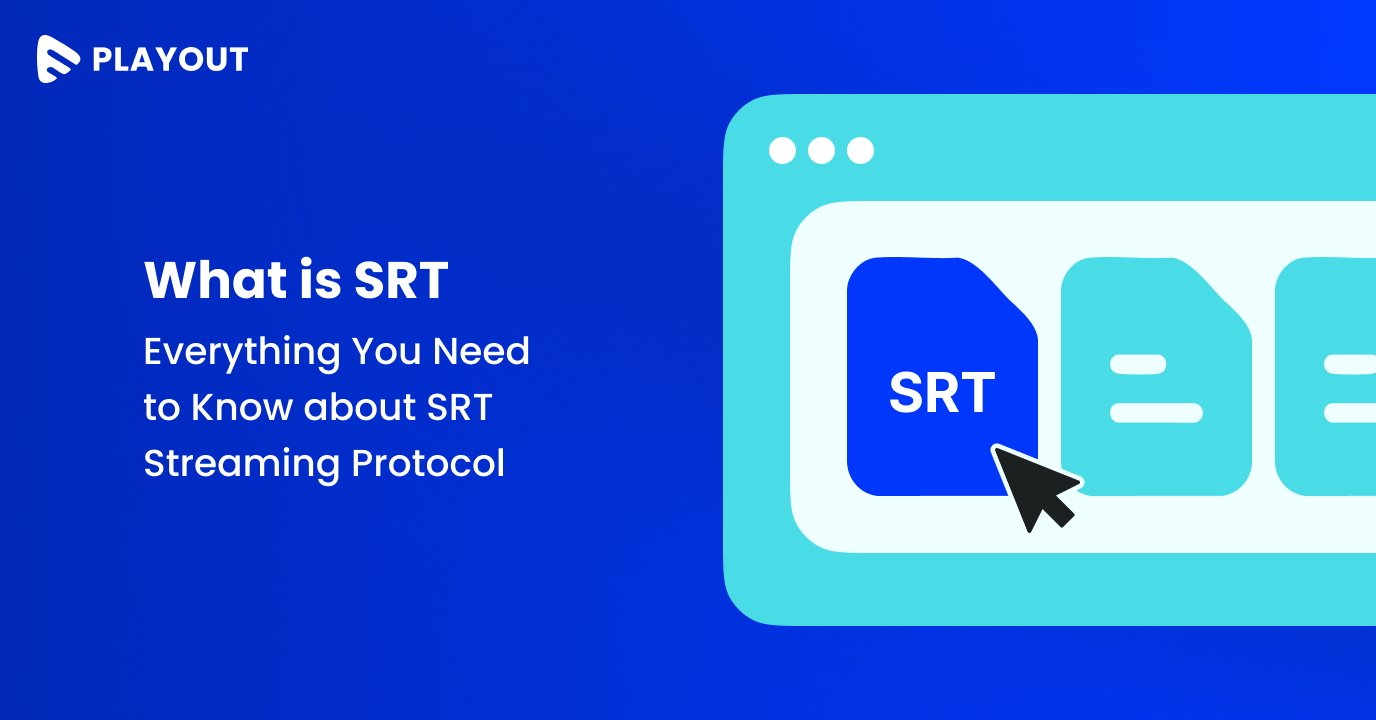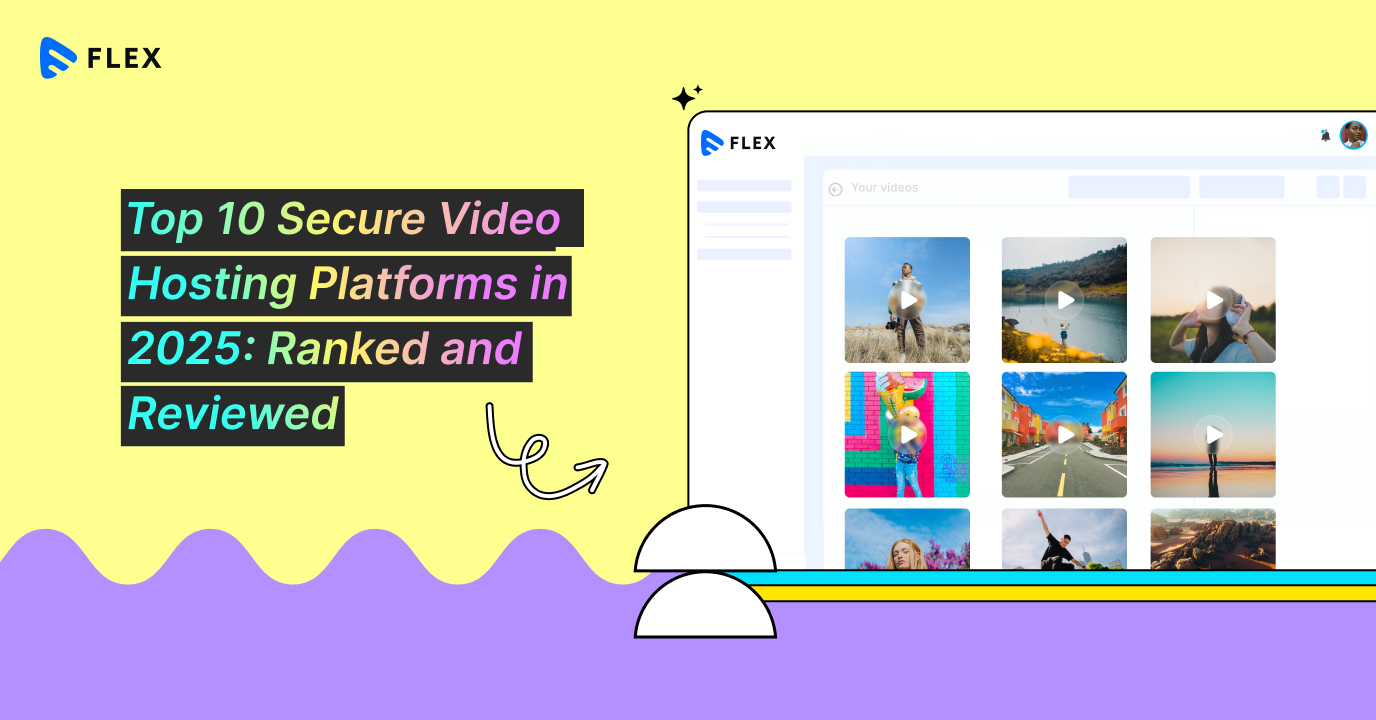SRT also known as Secure Reliable Transport, is an open source protocol which has been existing over the last 6+ years, but its popularity has recently started gaining after adoption by leaders like FoxNews to AL Jazeera and even NASA! Developed by Haivision and promoted by SRT Alliance, the cutting-edge protocol has gained prominence for its ability to deliver smooth streams, minimal lag, and pristine video quality. In this blog we will cover what SRT is, its benefits, how it works, and in short everything you would need to know about SRT.
What is SRT or Secure Reliable Transport?
SRT is a streaming protocol designed by Haivision to deliver low-latency audio and video streams across public and private networks. It is an open-source video transport protocol designed to deliver high-quality, low-latency video over unpredictable networks like the internet. It’s specifically built for live video streaming applications where a smooth and secure delivery is crucial, such as broadcasting, video conferencing, and remote production.
In a nutshell, SRT brings the best quality live video over unreliable networks. It accounts for packet loss, jitter, and fluctuating bandwidth all while maintaining the integrity and quality of video. Also, SRT can be considered as a secure protocol as it is AES encrypted and can easily traverse firewalls.
A Brief History of SRT
SRT was originally developed and pioneered by Haivision in 2012 to reduce the expenses of video contribution by satellite and private networks. The protocol was first demoed at IBC the following year, and Haivision soon released it as part of their product family.
The SRT Alliance is now a community of 600 industry leaders and developers striving to achieve lower latency video transport by continuously innovating SRT. It includes members like AWS, CloudFlare, Google Cloud, Microsoft, NVIDIA, Paramount, SK Telecom, Sony, and YouTube, to name a few.
“The mission of the SRT Alliance is to overcome the challenges of low-latency video streaming, thereby changing the way the world streams. Fundamental to this mission is the support of a freely available open-source video transport protocol that will accelerate innovation through collaborative development. The SRT Alliance will promote the industry-wide recognition and adoption of SRT as a common standard for all low-latency internet streaming.”
Haivision subsequently released SRT on GitHub to encourage interoperability.

Today, more than 450 technology vendors are actively collaborating on SRT to ensure SRT’s dominance as standard low-latency technology in the broadcast and streaming industries.
Technical Overview of SRT:
The technical information below is SRT at a glance:
- Audio Codecs: Codec-agnostic
- Video Codecs: Codec-agnostic
- Playback Compatibility: Includes VLC Media Player, FFPlay, Haivision Play Pro, Haivision Play, Larix Player, and Brightcove
- Benefits: High-quality, low-latency video streams over suboptimal and public networks
- Latency: Less than 2 seconds, varies depending on how much latency the streamer is willing to trade for packet loss
How Does SRT Work?
SRT solves latency issues that entail live video transport like a pro such as packet loss, jitter, and bandwidth limitations. The protocol features:
- End-to-end security with AES 128/256-bit encryption
- Packet loss recovery through advanced low latency retransmission techniques
- Video and audio stream timing recovery
- Simplified firewall traversal
- Network health monitoring between endpoints (packet loss, latency, jitter)
SRT Workflow:
Here’s a thorough breakdown of how SRT works:
- Starting the Video- First, the video is encoded to make it easier to send over the internet. Then, the video is split into small packets so it can be sent more easily over the network.
- Sending the Video- The video packets are sent over the internet using SRT. This works well even if the network is unreliable (e.g., if there are connection drops or slow speeds) If some packets get lost or delayed, SRT can recover them automatically, so you don’t notice any issues. For extra security, SRT can encrypt the video, keeping it safe from unauthorized access.
- Fixing Network Issues- If the network causes delays (called jitter), SRT uses a special buffer to smooth things out and keep the video flowing without pauses. SRT also has a built-in feature to correct errors, making sure the video stays clear even if some data is lost.
- Receiving and Watching the Video- On the receiving end, the video is decoded and then shown on the screen or sent to another system.
- Adjusting to Network Changes- SRT can adjust the video quality depending on the internet speed. If the network slows down, it lowers the video quality to avoid freezing. It also checks the connection speed and adjusts how much data it sends to keep everything smooth.
Benefits of SRT:
As you would have already understood by now, SRT’s primary advantages are its security and reliability. However, it has many others by virtue of which it has earned a spot among the top choice of live streamers. Here are some of them:
1. High Quality Video Streams – SRT constantly checks your internet connection and adjusts the stream’s bitrate depending on how fast your internet is. When your network slows down, SRT automatically lowers the video quality to avoid buffering. So it automatically adjusts and protects against jitter, packet loss, and bandwidth fluctuation, ensuring the best possible viewing experience.
2. Stable and Reliable Streams – If there’s a lot of traffic on the internet (network congestion), SRT slows down the stream to prevent interruptions. SRT sends smaller chunks of data at a time, reducing the chance of the stream getting stuck.
3. Fixing Lost Data – Sometimes, parts of the video can get lost while being sent over the internet. At such crucial junctures, SRT uses Forward Error Correction (FEC) to add extra data to help fill in the gaps. This means if a part of the video gets lost, SRT can recover it automatically.
4. Highly Secure – SRT encrypts your video using AES 128/256 which means that if someone tries to intercept it, all they’ll get is scrambled data. Only the authorized server or viewer can decrypt it and view the video. SRT ensures that valuable content is protected end-to-end so that no unauthorized parties can listen.
Also, Data Integrity ensures that the video stream hasn’t been altered or corrupted during transmission. When data is sent, SRT generates a checksum (a digital fingerprint of the data). When the data reaches its destination, the receiver compares the checksum to make sure the data hasn’t been tampered with or corrupted.
5. Low Latency – SRT’s stream error correction is configurable to accommodate a user’s deployment conditions. Leveraging real-time IP communications, SRT delivers media with significantly lower latency than TCP/IP, while offering the speed of unreliable UDP transmission without the disadvantage.
6. Content Agnostic – SRT isn’t like other streaming protocols in terms of content compatibility. The fact that it is content agnostic makes it compatible across all kinds of video and audio format. This is because it only operates at the network transport level, acting as a wrapper around your content, it can transport any type of video format be it MPEG-2, H.264, or even HEVC, codec, resolution, or frame rate.
7. Firewall Friendly – SRT Reliably streams from unknown locations and event centers without requiring additional IT resources.
8. Open Source – SRT streaming can be implemented using a free, open-source code base, keeping costs low for all parties.
9. Affordable – SRT’s security and reliability make the public internet a viable option for an expanded range of streaming applications. SRT offers significant operational flexibility and cost savings compared to satellite or custom network infrastructures.
Comparative Analysis of Streaming Protocols:
Now that you know all about the benefits of the SRT streaming protocol, you might wonder how it stacks up against other protocols. Here’s a quick overview of how SRT compares to some of the most popular streaming protocols.
| Protocol | Latency | Video Quality | Scalability | Security | Bandwidth Efficiency |
| SRT | Less than 2s | High | Medium | High | High |
| RTMP | 3-5s | Medium | Medium | Medium | Medium |
| HLS | 6-30s | High | High | Medium | Medium |
| LL-HLS | Less than 3s | High | High | Medium | Medium |
| RTSP | 2s | High | Low | High | Medium |
| WebRTC | Less than 1s | Medium | Low | High | Medium |
Who Uses SRT?
Who doesn’t? Currently SRT is deployed by thousands of organizations globally for a wide range of applications, from video encoders, IP cameras, to gateways, OTT platforms, and CDNs. SRT has also been endorsed by major global technology partners like Microsoft, YouTube, AWS and end users like NFl, Fox News and even NASA.
SRT Use Cases
Here are several notable use cases that illustrate SRT’s versatility and effectiveness:
Remote Event Production Over Unreliable Networks
SRT is particularly beneficial for broadcasting live events from locations with suboptimal internet connectivity. For instance, consider a livestock auction in rural Wisconsin aiming to reach a global audience. Traditional broadcasting methods would require costly satellite uplinks, while standard streaming could suffer from latency and quality issues. By utilizing SRT, the auction house can stream high-quality, low-latency video over the public internet without the need for expensive infrastructure, ensuring real-time bidding and broader participation.
Large-Scale Virtual Events
The 2020 NFL Draft serves as a prime example of SRT’s capabilities in managing complex, large-scale virtual events. Faced with the challenge of conducting the draft entirely online, the NFL employed SRT to connect over 600 live feeds, ensuring synchronized, low-latency streaming across various locations.
First-Mile Contribution in Challenging Environments
For content creators operating in environments with unstable or limited internet connectivity, SRT offers a robust solution for the “first-mile” problem—the initial transmission of live video to a streaming platform. By leveraging SRT, broadcasters can securely and reliably transport high-quality streams to services like Muvi, where the content can be transcoded and redistributed, ensuring consistent viewer experiences despite initial network challenges.
Cost-Effective Alternatives to Traditional Broadcast Infrastructure
Organizations looking to reduce reliance on expensive satellite or dedicated network connections can turn to SRT as a cost-effective alternative. By facilitating secure and reliable streaming over the public internet, SRT eliminates the need for proprietary transport platforms, enabling broadcasters to maintain high-quality video delivery while significantly cutting costs.
Interactive, Two-Way Streaming Applications
SRT’s low-latency and reliable transport make it ideal for developing interactive, two-way video applications. Whether it’s for remote interviews, live Q&A sessions, or collaborative virtual events, SRT ensures real-time communication with minimal delay, enhancing audience engagement and interaction.
SRT in Muvi
SRT is now deployable in Muvi Playout and it lets you Stream Faster & Smarter with SRT Push. Muvi Playout now lets you stream live content directly to third-party platforms with SRT Push—faster, smoother, and more reliable than ever. Say goodbye to delays and buffering—SRT keeps your stream steady, even on unstable networks.
With SRT, you can stream live content directly from your production setup to satellite teleports via the public internet, eliminating the need for expensive satellite uplink infrastructure. SRT Push gives broadcasters the freedom to stream from virtually any location without the need for satellite trucks or fixed uplink stations.
To Conclude,
SRT (Secure Reliable Transport) is a game-changer for live streaming. It delivers high-quality, low-latency video even when the network isn’t at its best. Whether you’re dealing with packet loss, jitter, or network congestion, SRT has you covered, making it a top choice for everything from broadcasting to remote production.
So, whether you are searching for a high-performance alternative to RTMP or want to deliver high-quality streams over suboptimal networks – SRT in Muvi playout is the solution for you. SRT Push in Muvi Playout is designed for broadcasters, media companies, and content creators who need seamless live content distribution.
Take a 14 day Free Trial to get better clarity!














Add your comment